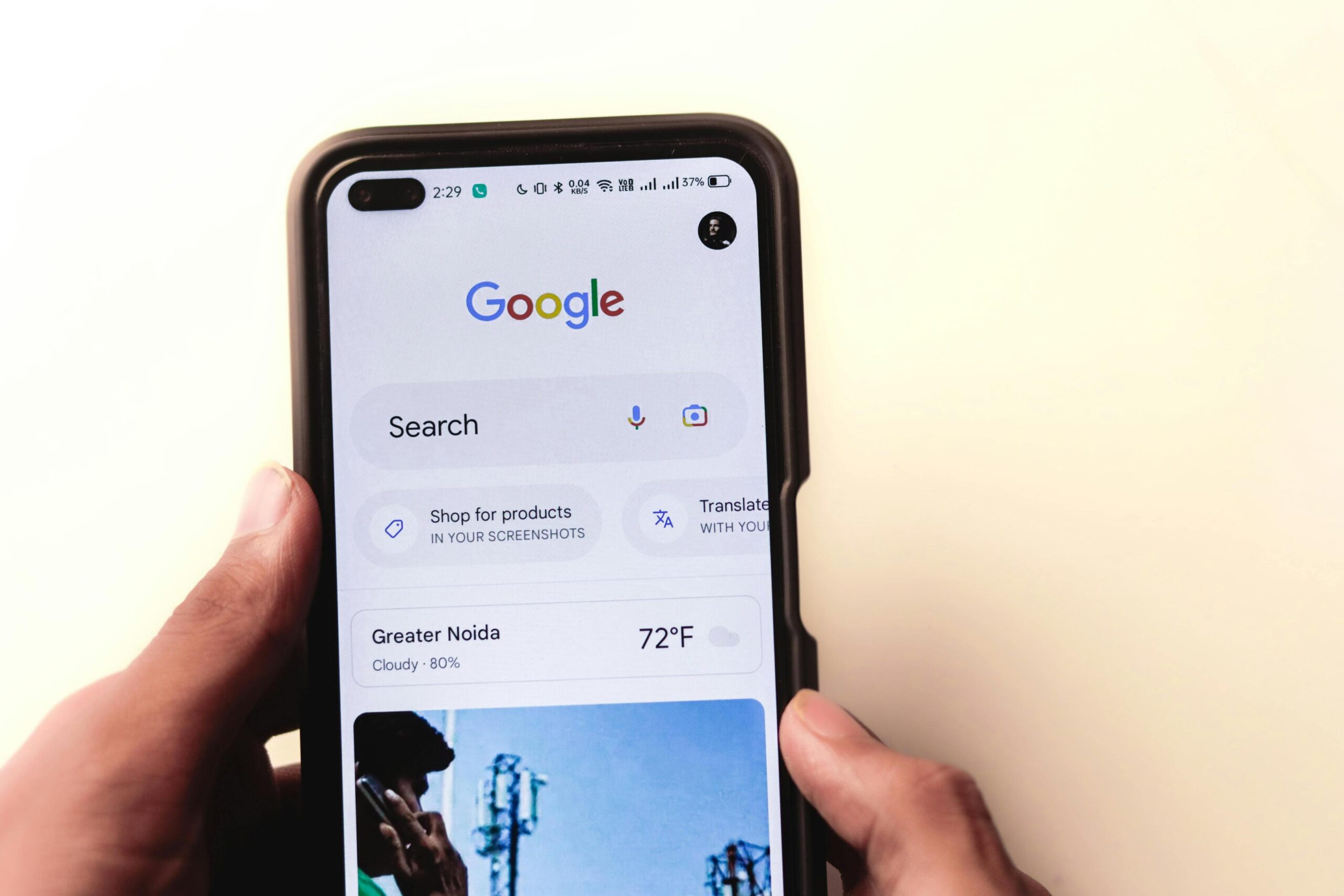Ortho Marketing for orthodontists has changed significantly over the past decade. Traditional methods like print ads and direct mail are no longer enough to attract new patients. Digital advertising now plays a critical role in growing an orthodontic practice. By using data-driven strategies and targeted campaigns, Ortho Marketing helps orthodontists reach the right audience and improve their return on investment.
Patients today search online before choosing an orthodontist. They read reviews, compare treatment options, and look for promotions. This shift in behavior makes digital advertising more important than ever. Paid search, social media ads, and remarketing campaigns allow orthodontists to connect with potential patients at different stages of their decision-making process. The key is knowing which strategies work and how to measure their success.
The Shift Toward Digital Advertising in Orthodontics
Why Traditional Marketing Falls Short
Orthodontic practices that rely only on traditional advertising may struggle to keep up. Print ads, radio spots, and billboards reach a broad audience, but they lack precision. These methods don’t allow for targeted messaging, making them less effective in converting leads into patients.
Traditional advertising also doesn’t provide measurable insights. With digital advertising, orthodontists can track every click, impression, and conversion. This data helps refine marketing efforts, ensuring resources are spent on strategies that deliver the best results.
How Digital Advertising is Changing the Industry
The rise of digital platforms has transformed marketing for orthodontists. Practices now have access to tools that allow them to reach potential patients based on location, interests, and online behavior. Some of the most effective digital advertising strategies include:
- Google Ads and Local Services Ads – Appear at the top of search results when potential patients look for orthodontic treatments.
- Social Media Advertising – Use platforms like Facebook, Instagram, and TikTok to engage with a younger audience.
- Retargeting Campaigns – Bring back website visitors who didn’t book an appointment the first time.
- AI and Automation – Optimize ad performance in real-time to improve efficiency.
Digital marketing for orthodontists isn’t just about running ads. It’s about using the right strategies to attract, convert, and retain patients while keeping advertising costs manageable. With the right approach, orthodontic practices can see steady growth and higher ROI.
Top Digital Advertising Trends in Marketing for Orthodontists
1. Search Engine Advertising (Google Ads & Local SEO)
When potential patients search for orthodontic services, they often turn to Google. This makes Google Ads one of the most effective tools for marketing for orthodontists. By bidding on high-intent keywords like “Invisalign near me” or “braces consultation,” practices can appear at the top of search results.
- Google Ads – Pay-per-click (PPC) campaigns target users actively looking for orthodontic services. These ads can be adjusted based on location, budget, and patient demographics.
- Local Services Ads – A newer Google feature that highlights trusted orthodontists at the top of search results. These ads focus on local searches and often lead to direct calls or appointment requests.
- Search Engine Optimization (SEO) – While paid ads generate immediate traffic, SEO builds long-term visibility. Orthodontists should optimize their websites for local searches by adding relevant keywords, updating Google Business profiles, and collecting patient reviews.
2. Social Media Advertising (Facebook, Instagram, and TikTok Ads)
Social media platforms are essential for orthodontic marketing. They provide an opportunity to engage with potential patients in a visually appealing way.
- Facebook & Instagram Ads – These platforms allow orthodontists to run highly targeted campaigns based on age, interests, and location. Carousel ads, video testimonials, and promotional offers tend to perform well.
- TikTok Ads – Short-form videos showcasing before-and-after transformations or patient testimonials can capture attention quickly. This is especially useful for reaching teens and young adults considering orthodontic treatment.
- Engagement & Community Building – Beyond paid ads, orthodontists can use organic social media content to educate potential patients and respond to inquiries in real-time.
3. Retargeting & Remarketing Strategies
Not every patient books an appointment on their first visit to an orthodontist’s website. Retargeting ads help bring those visitors back.
- Website Retargeting – If someone visits the site but doesn’t convert, display ads can remind them of the practice.
- Social Media Retargeting: Facebook and Instagram can show ads to users who interact with the practice’s page but haven’t scheduled a consultation.
- Email Retargeting – Sending follow-up emails with special offers or educational content can re-engage potential patients.
4. AI & Automation in Digital Advertising
Artificial intelligence is making advertising more efficient. Many platforms now use machine learning to optimize campaigns automatically.
- Automated Bidding: Google and Facebook use AI to adjust ad spending in real time, ensuring the best cost per click.
- Chatbots & Automated Responses – AI-driven chatbots can answer common patient questions, schedule consultations, and even collect lead information.
- Predictive Analytics – AI tools analyze data to forecast which ads will perform best, reducing wasted ad spend.
5. Influencer & Micro-Influencer Collaborations
Partnering with influencers has become a powerful marketing strategy for orthodontists. Patients trust real experiences, and influencers can help bridge that gap.
- Local Influencers – Collaborating with local bloggers or social media personalities can boost credibility and visibility.
- Patient Success Stories – Featuring real patients in testimonial videos or social media shoutouts builds trust.
- Giveaways & Promotions – Influencers can host giveaways, offering discounts on consultations or treatments to their followers.
Measuring ROI in Marketing for Orthodontists
Investing in digital advertising is only effective when it delivers measurable results. Understanding which campaigns bring in new patients and which need improvement helps orthodontic practices maximize their marketing budget. Tracking return on investment (ROI) ensures that efforts lead to growth rather than wasted spending.
Key Metrics to Track
To measure the success of digital advertising, orthodontists should focus on the following metrics:
- Cost Per Lead (CPL) – The average cost of acquiring a new lead through ads. A lower CPL means ads are running efficiently.
- Conversion Rate – The percentage of people who take action after clicking an ad, such as booking a consultation or calling the office.
- Patient Lifetime Value (LTV) – The estimated revenue generated by a patient throughout their time with the practice.
- Click-Through Rate (CTR) – The percentage of people who click on an ad after seeing it. A higher CTR suggests that the messaging and visuals are appealing.
- Return on Ad Spend (ROAS) – Compares how much revenue is generated for every dollar spent on advertising.
Tools for Tracking Digital Advertising Performance
Several tools can help orthodontists measure ad performance and make data-driven adjustments:
- Google Analytics – Tracks website traffic, lead conversions, and user behavior.
- Facebook Business Manager – Provides insights into social media ad engagement and audience interactions.
- Google Ads Dashboard – Shows ad performance, keyword effectiveness, and cost per conversion.
- Call Tracking Software – Helps orthodontists determine which ads drive the most phone inquiries.
- CRM Systems – Platforms like HubSpot or Salesforce help track patient interactions from the first inquiry to consultation and treatment.
How to Improve ROI in Digital Advertising
Once performance data is collected, orthodontic practices can make strategic improvements:
- Adjust targeting – Focus on specific demographics and locations to reach the right audience.
- Refine ad copy and visuals – Test different messaging and creative elements to see what resonates most.
- Optimize landing pages – Ensure that patients who click on ads find precise information and an easy way to book consultations.
- Monitor ad spend – Shift budget toward high-performing campaigns and reduce spending on underperforming ones.
- Use A/B testing. Experiment with different ad formats, calls to action, and images to find the most effective combinations.
Best Practices for Maximizing ROI in Digital Advertising
Running digital ads is only part of the equation. To get the most out of Orthodontic advertising and marketing for orthodontists, practices need to optimize their approach. Small adjustments can lead to higher patient engagement, better conversion rates, and lower advertising costs.
1. Set Clear Goals and Budget Wisely
Every ad campaign should have a clear objective. Without a defined goal, it’s easy to waste money on clicks that don’t convert. Common objectives include:
- Increasing consultation bookings
- Driving website traffic
- Boosting brand awareness
- Promoting special offers on Invisalign or braces
Budget allocation is equally important. High-performing campaigns should receive more funding, while underperforming ones should be adjusted or paused.
2. A/B Test Ad Creatives and Targeting
Testing different ad versions helps determine what resonates with potential patients. A/B testing involves:
- Trying different headlines and descriptions
- Using various images or videos
- Adjusting the call-to-action (CTA)
- Testing different audience segments
By continuously refining ads, orthodontists can lower costs while increasing engagement.
3. Utilize Geo-Targeting and Audience Segmentation
Ads should be shown to people most likely to become patients. Geo-targeting ensures ads appear only in the practice’s service area, preventing wasted ad spend. Audience segmentation allows orthodontists to:
- Target specific age groups (teens for braces, adults for Invisalign)
- Focus on families looking for orthodontic care
- Retarget website visitors who showed interest but didn’t book an appointment
4. Leverage Patient Testimonials and Before-and-After Photos
Trust is a major factor in orthodontic decisions. Real patient experiences help convince potential patients to schedule a consultation. Ads featuring testimonials, before-and-after images, or video success stories tend to perform well.
5. Stay Compliant with HIPAA Regulations
Marketing for orthodontists must follow HIPAA guidelines. Patient information should never be shared in ads without explicit consent. Social media ads should avoid using identifiable patient data unless proper permissions are obtained.
6. Monitor and Adjust Campaigns Regularly
Digital advertising isn’t a one-time effort. Regularly reviewing ad performance allows orthodontists to:
- Pause low-performing ads
- Increase spending on high-performing campaigns
- Update ad copy based on trends and seasonality
- Adapt to changes in Google and social media algorithms
Frequently Asked Questions
Q1: What is the most effective digital advertising platform for orthodontists?
The best platform depends on the practice’s goals. Google Ads is highly effective for capturing high-intent searches, such as “braces consultation near me.” Facebook and Instagram Ads work well for brand awareness and engaging with potential patients. TikTok Ads can be beneficial for reaching younger audiences interested in Invisalign or other orthodontic treatments.
Q2: How much should an orthodontic practice spend on digital advertising?
Budgets vary based on location, competition, and goals. Many orthodontic practices allocate 5-10% of their revenue toward marketing, with a significant portion dedicated to digital advertising. Testing different ad types and adjusting based on performance helps maximize the budget.
Q3: How long does it take to see results from digital marketing for orthodontists?
Results depend on the strategy. Google Ads can drive new patient inquiries within days, while SEO takes longer to build momentum but provides long-term benefits. Social media advertising may take a few weeks to optimize for the best engagement and conversions.
Q4: Are Google Ads or Facebook Ads better for orthodontic marketing?
Both platforms have unique benefits. Google Ads targets people actively searching for orthodontic services, making it effective for immediate lead generation. Facebook and Instagram Ads are better for brand awareness and engaging potential patients before they begin searching for treatment.
Q5: What are the common mistakes orthodontists make in digital advertising?
Some of the most common mistakes include:
- Not tracking ROI – Running ads without measuring performance leads to wasted budget.
- Using broad targeting – Ads that aren’t location-specific or patient-focused can result in low-quality leads.
- Ignoring ad creatives – Poorly designed ads with unclear messaging don’t attract attention.
- Failing to optimize landing pages – If an ad leads to a slow or confusing website, potential patients may leave before booking an appointment.
- Setting and forgetting campaigns – Digital advertising requires ongoing monitoring and adjustments to remain effective.
Boost Your Practice with Expert Orthodontic Marketing
Looking to grow your practice with proven digital strategies? At Ortho Marketing, we specialize in orthodontic advertising that helps practices attract and retain more patients. As one of the leading orthodontic marketing companies in New York, we understand the evolving digital landscape and how to connect you with your ideal audience.
From online marketing for orthodontist to SEO, social media, and paid ads, we create customized strategies designed to increase visibility and drive results. Let’s take your practice to the next level—contact us today to get started!








